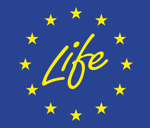
LIFE Nirvana, a project co-funded by the LIFE Programme, aims to reduce the concentration of nitrates in contaminated aquifers through a novel in situ remediation technology that is environmentally friendly, based on the enhancement of biological denitrification through the dosing of zero-valent iron nanoparticles (ZVI).
This objective has been addressed through the design, construction and operation of pilot-scale denitrification in a porous aquifer contaminated with nitrates of agricultural origin, which has been considered representative of nitrogen-contaminated aquifers at the European level.
The pilot, managed by Aguas de Murcia, has been going from July 2021 to May 2023, with sampling in observation wells, nanoparticles and sodium acetate injections and subsequent water analysis (in situ and in the laboratory).
The aim is to allow a temporal evaluation of the parameters indicating the water quality in the aquifer, to be able to interpret the effectiveness of the different treatments carried out and their spatial evolution within the pilot, able to extra the operating rates of the treatments.
As indicators of water quality, the following parameters have been analyzed:
In the pilot activity, we can summarize the tasks performed in the following statistics:
The greatest dedication of the fieldwork has focused on the sodium acetate injection to create and maintain a reactive denitrifying bacterial community to the injection, achieving a reduction of nitrates in the following hours close to 90%.
After injection of acetate and ZVI nanoparticles, in intensive experiments with sampling every 2-3 hours using automatic samplers, it has been possible to verify the denitrifying activity by observing an increase in TOC against nitrate consumption.
As the main challenges for Aguas de Murcia in this project, we highlight: